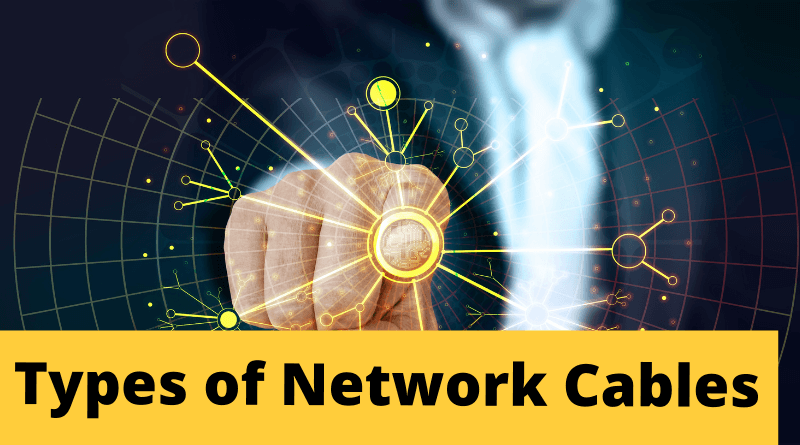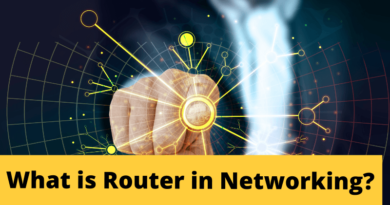Types of Network Cables
In this tutorial, we are going to see different types of network cables. To connect the different entities of a network, several physical media for data transmission can be used. One of these possibilities is using cables. There are many types of cables, but we generally distinguish :
- Coaxial cable
- Double twisted pair
- Optical fiber
Coaxial cable:
Coaxial cable has always been the cable of choice, for the simple reason that it is inexpensive and easy to handle (weight, flexibility, …).
A coaxial cable consists of a central part (called core), which is a copper wire, wrapped in an insulator, then a braided metal shield, and finally an outer sheath.

Image source: https://commons.wikimedia.org/wiki/File:Coaxial_cable_cut.jpg
- The sheath protects the cable from the outside environment. It is usually made of rubber (sometimes of polyvinyl chloride (PVC), sometimes of Teflon).
- The shielding (metallic envelope) surrounding the cables allows to protect the data transmitted on a support from parasites (or noise) which can cause a distortion of the data.
- The insulation surrounding the core is made of a dielectric material to avoid any contact with the shielding, causing electrical interactions (short circuit).
- The core, which carries the data, is usually made of a single copper strand or several twisted strands.
Thanks to its shielding, coaxial cable can be used over long distances and at high speeds (unlike twisted pair cable), but it is reserved for basic installations.
Note that there are coaxial cables with double shielding (one insulating layer, one shielding layer) as well as coaxial cables with quadruple shielding (two insulating layers, two shielding layers).
Twisted-pair cabling:
In its most basic form, twisted-pair cable consists of two strands of copper twisted together and covered with insulation.
There are generally two types of twisted-pair cables:
- Shielded Twisted-Pair (STP).
- Unshielded Twisted-Pair (UTP).

Image source: https://commons.wikimedia.org/wiki/File:Utp_diy04_straighten.jpg
Unshielded Twisted Pair (UTP):
The UTP cable complies with the 10BaseT specification. It is the most widely used type of twisted pair for local area networks.
Most telephone installations use UTP cable. Many buildings are pre-wired for this type of installation (often in sufficient number to meet future needs). If the pre-installed twisted pair is sufficiently good, it is possible to transfer data and thus use it in a computer network. However, the number of twists and other electrical characteristics required for good data transmission must be considered.
The main problem is that UTP cable is particularly subject to interference (signals from one line mixing with those from another). The only solution is shielding.
Shielded Twisted-Pair (STP):
Shielded Twisted Pair (STP) cable uses a higher quality and more protective copper jacket than the jacket used by UTP cable. It contains a protective jacket between and around the pairs. In STP cable, the copper wires of a pair are themselves twisted, which provides STP cable with excellent shielding, which means better protection against interference.) On the other hand, it allows for faster transmission over a longer distance.
Optical fiber:
Optical fiber is a cable with many advantages:
- Lightweight
- Noise immunity
- Low attenuation
- Tolerates data rates up to 100 Mbps
- Bandwidth from a few tens of megahertz to several gigahertz (single mode fiber)

Image source: https://commons.wikimedia.org/wiki/File:Fiber_optic_illuminated.jpg
Optical cabling is particularly well suited for connecting backbones (the main connection between several buildings) because it allows connections over long distances (from a few kilometers to 60 km in case of single-mode fiber) without the need for any grounding. Moreover, this type of cable is very safe because it is extremely difficult to tap such a cable.
However, despite its mechanical flexibility, this type of cable is not suitable for connections in a local network because its installation is difficult and it’s cost high. This is why twisted pair or coaxial cable is preferred for small connections.





